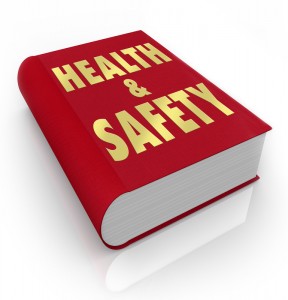 When finding inspiration for legislation, you would expect the government to draw heavily on facts, figures and evidence from experienced parties. Fictional stories should not ordinarily be part of the process.
When finding inspiration for legislation, you would expect the government to draw heavily on facts, figures and evidence from experienced parties. Fictional stories should not ordinarily be part of the process.
However philosopher and author Ayn Rand’s novels have often been cited as inspiration for defining government economic policies, particularly in the USA. Whether Rand’s views on derestricting profit-making businesses are made for good economic policy is debatable. Her views on corporate health safety however certainly do not make for legislation.
Atlas Shrugged, believed by many to be Rand’s greatest work demonstrates a frighteningly callous attitude towards safety for instance. The heroes of Atlas Shrugged are all daring entrepreneurs and captains of industry, whose primary motivation is to generate vast profits from their businesses. None of them are remotely interested in public safety, and any legislation designed to improve the wellbeing of workers is simply state interference.
Dagny Taggart, a danger to herself, her employees and the general public
Dagny Taggart, an heroic railroad baron, is clearly not a stickler for the rules. When her cross-country train is delayed by a red light, she overrides her employees’ concerns and orders them to ignore the stop signal despite their suspicion that there might be something genuinely wrong with the signal. Rand clearly approves of such gung-ho behaviour, painting Taggart as a decisive capitalist whose actions are to be applauded.
Taggart’s contempt for safety is not reserved for her employees either. Later in the novel she decides to rebuild part of her rail network using a brand new alloy that has never been properly tested, nor deployed in a genuine industrial project. She then compounds the issue by driving her train along the new track, which passes through densely populated towns and cities, at a speed of least one hundred miles an hour. Again, Taggart overrides the safety concerns of her employees in pursuit of profit.
Taggart takes things even further by having her protagonist threaten and bribe officials to allow her project to proceed. When she is finally questioned by a reporter about the protection people have should the line turn out to be dangerous, she simply replies, “Don’t ride on it.”
Atlas Shrugged – a guidebook in how not to do health and safety
But perhaps Ayn Rand’s novels can teach governments something about health and safety policy. Or more accurately how not to legislate for the welfare of workers and the general public.
Rand is not an isolated case when it comes to risky behaviour in fiction. After all, plenty of adventure stories and thrillers rely on dangerous choices to provide suspense. However few other fictional works have attracted the attentions of lawmakers in the same way as Atlas Shrugged – thank goodness the HSE still prefers to advise government policy based on empirical data and real world experience.
What is the worst example of fictional health and safety advice you can remember? What book did it appear in?

A chartered (fellow) safety and risk management practitioner with 20+ years of experience. David provides a healthy dose of how-to articles, advice and guidance to make compliance easier for construction professionals, Architects and the built environment. Get social with David on Twitter and Linkedin.




One Comment
Wesley Mouch couldn’t have said it any better.